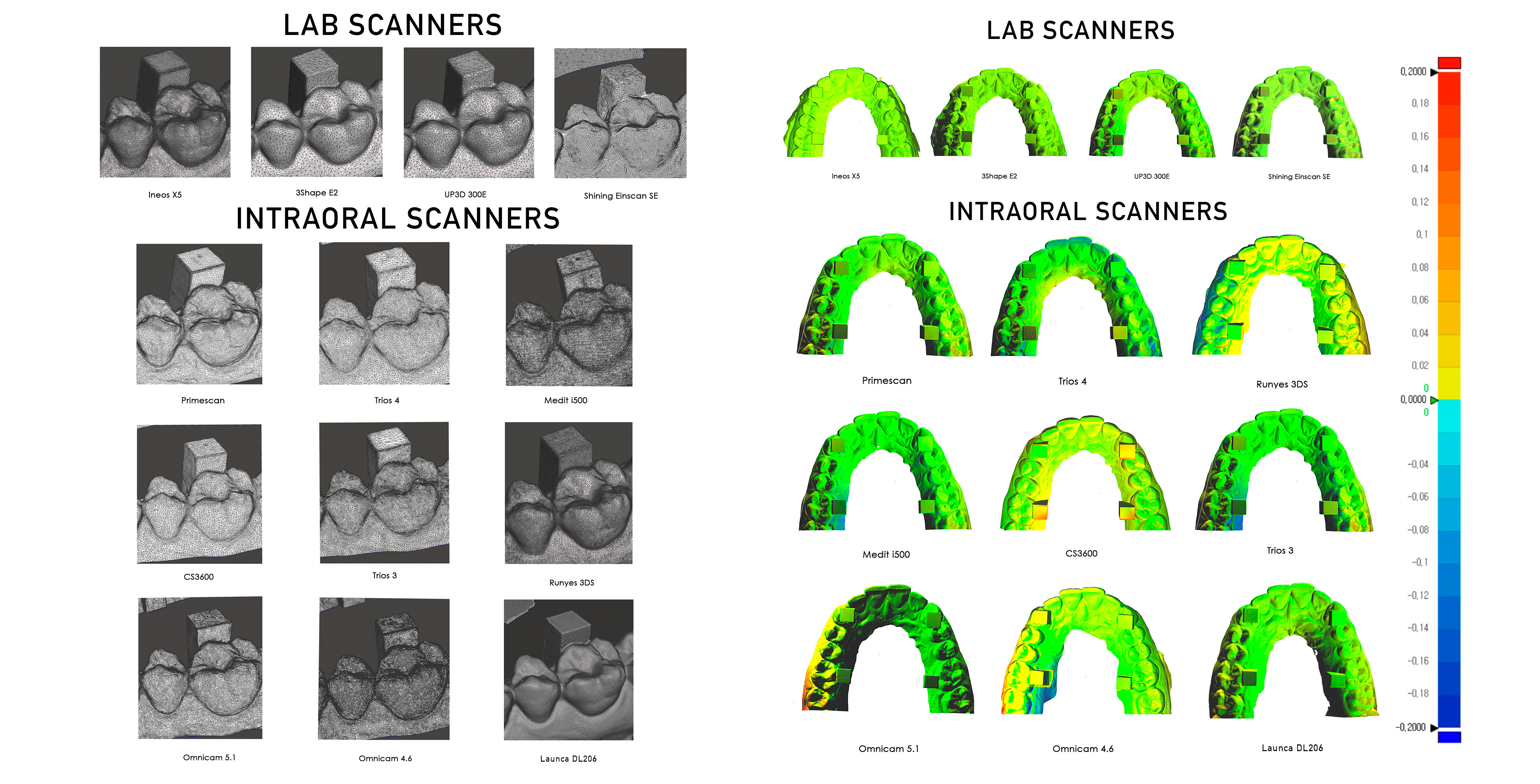(1) Background: The purpose of this study is to evaluate the full arch scan accuracy (precision and trueness) of nine digital intra-oral scanners and four lab scanners. Previous studies have compared the accuracy of some intra-oral scanners, but as this is a field of quickly developing technologies, a more up-to-date study was needed to assess the capabilities of currently available models.; (2) Methods: The present in vitro study compared nine different intraoral scanners (Omnicam 4.6; Omnicam 5.1; Primescan; CS 3600; Trios 3; Trios 4; Runyes; i500 and DL206) as well as four lab light scanners (Einscan SE; 300e; E2 and Ineos X5) to investigate the accuracy of each scanner by examining the overall trueness and precision. Ten aligned and cut scans from each of the intra-oral and lab scanners in the in vitro study were brought into CloudCompare. A comparison was made with the master STL using the CloudCompare 3D analysis best-fit algorithm. The results were recorded along with individual standard deviation and a colorimetric map of the deviation across the surface of the STL mesh; a comparison was made to the master STL, quantified at specific points. ; (3) Results: In the present study, the Primescan had the best overall trueness (17.3 ± 4.9). Followed by (in order of increasing deviation) the Trios 4 (20.8 ± 6.2), i500 (25.2 ± 7.3), CS3600 (26.9 ± 15.9), Trios 3 (27.7 ± 6.8), Runyes (47.2 ± 5.4), Omnicam 5.1 (55.1 ± 9.5), Omnicam 4.6 (57.5 ± 3.2) and Launca DL206 (58.5 ± 22.0). Regarding the lab light scanners, the Ineos X5 had the best overall trueness with (0.0 ± 1.9). Followed by (in order of increasing deviation) the 3Shape E2 (3.6 ± 2.2), Up3D 300E (12.8 ± 2.7), and Einscan SE (14.9 ± 9.5); (4) Conclusions: This study confirms that all current generations of intra-oral digital scanners can capture a reliable, reproducible full arch scan in dentate patients. Out of the intra-oral scanners tested, no scanner produced results significantly similar in trueness to the Ineos X5. However, the Primescan was the only one to be statistically of a similar level of trueness to the 3Shape E2 lab scanner. All scanners in the study had mean trueness of under 60-micron deviation. While this study can compare the scanning accuracy of this sample in a dentate arch, the scanning of a fully edentulous arch is more challenging. The accuracy of these scanners in edentulous cases should be examined in further studies.

